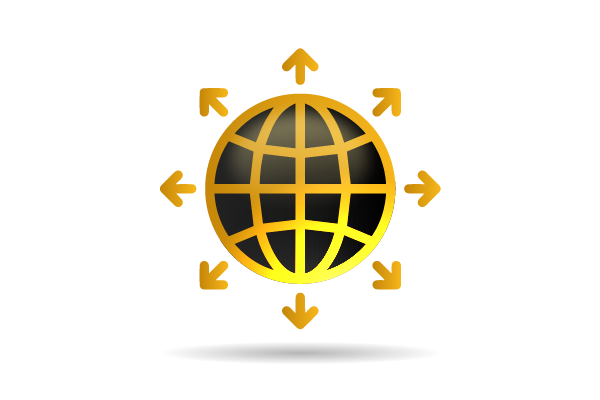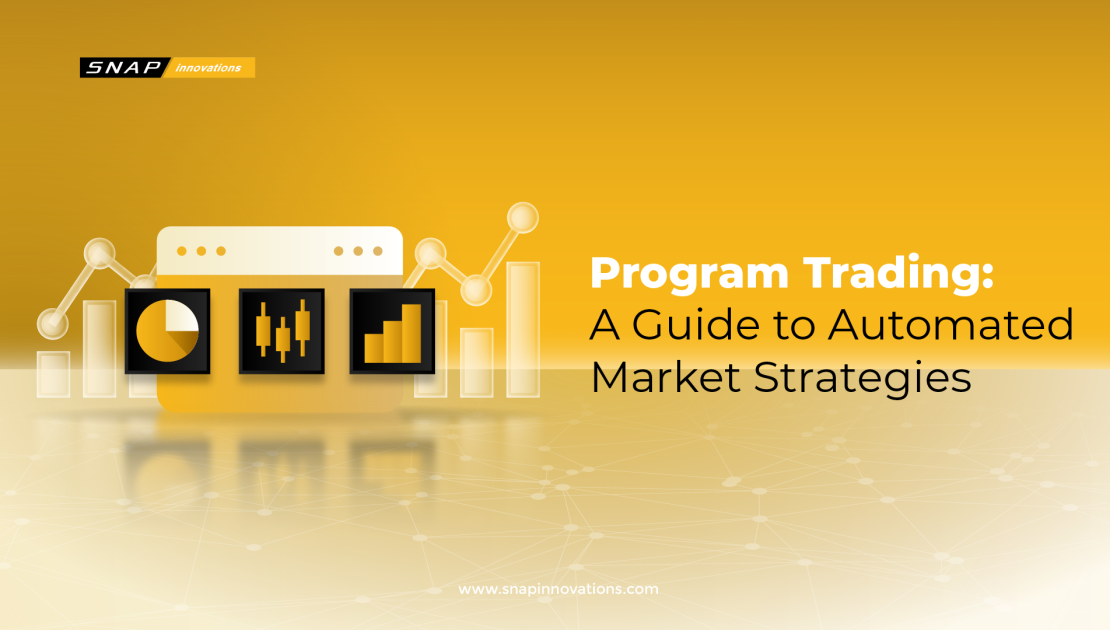In today’s fast-paced financial markets, technology plays an essential role in gaining a competitive edge. Program trading is a powerful tool that enables investors to quickly and efficiently execute large-scale trades, leveraging technology to achieve results that would be impossible with manual trading alone. This trading strategy has fundamentally changed the way institutional investors operate, providing speed, accuracy, and the ability to capitalize on even the smallest market opportunities.
Program trading is particularly valuable for large financial players such as hedge funds, pension funds, and investment banks. By automating trading decisions, these entities can remove human biases, capitalize on fleeting opportunities, and ensure their portfolios are always optimally balanced. In this article, we will explore what program trading is, its various purposes, and specific examples that illustrate how this strategy is used in practice.
What is Program Trading?
 Program trading is a type of trading strategy that uses powerful algorithms to execute multiple stock trades simultaneously, often with the aid of sophisticated computers. These algorithms, programmed by financial analysts and engineers, help identify trading opportunities based on specific conditions in the market. Unlike manual trading, program trading allows large volumes of trades to occur almost instantaneously, optimizing response times and reducing the influence of human emotions.
Program trading is a type of trading strategy that uses powerful algorithms to execute multiple stock trades simultaneously, often with the aid of sophisticated computers. These algorithms, programmed by financial analysts and engineers, help identify trading opportunities based on specific conditions in the market. Unlike manual trading, program trading allows large volumes of trades to occur almost instantaneously, optimizing response times and reducing the influence of human emotions.
This trading strategy is widely used by institutional investors, hedge funds, and other big market players because of its efficiency in executing trades in bulk. The goal is to leverage technology to take advantage of small price differences or fluctuations across different securities.
Read More: High-Touch Trading: A Guide to Personalized Financial Transactions
Why Is Program Trading Important for Modern Finance?
 The main purpose of program trading is to enhance trading efficiency by automating the process, allowing investors to capitalize on market opportunities that are too quick for human traders to capture. Automation reduces the likelihood of errors that might arise from manual trading and allows firms to act upon opportunities like arbitrage or trend-following at a moment’s notice.
The main purpose of program trading is to enhance trading efficiency by automating the process, allowing investors to capitalize on market opportunities that are too quick for human traders to capture. Automation reduces the likelihood of errors that might arise from manual trading and allows firms to act upon opportunities like arbitrage or trend-following at a moment’s notice.
Program trading can also be employed to maintain balance within a portfolio. For instance, if an investor needs to rebalance assets to match a predetermined allocation, program trading can automatically buy or sell the necessary securities to reach that target. This way, investors can ensure they adhere to their investment strategies without delay.
Another key purpose is market-making. Market makers use program trading to provide liquidity by automatically buying and selling securities at quoted prices, thus maintaining the flow of transactions on exchanges.
Real-Life Examples of Program Trading in Action
Consider a scenario where a hedge fund wants to engage in index arbitrage. Suppose the fund observes that the prices of the stocks in an index are collectively cheaper than the value of the corresponding index futures contract. The program trading algorithm can quickly execute a series of buy orders for the underlying stocks and simultaneously sell index futures contracts, allowing the fund to lock in a profit from the price difference.
Another example involves rebalancing a large portfolio. Imagine an institutional investor managing a fund that tracks the S&P 500 index. If the weights of the stocks change due to market movements, the program trading algorithm will automatically buy and sell stocks to rebalance the portfolio so it accurately mirrors the index’s new composition.
These examples demonstrate the strength of program trading: speed, precision, and the ability to execute complex trading strategies efficiently.
Key Benefits of Program Trading
Program trading offers several benefits, particularly for large financial institutions that need to manage complex portfolios. These benefits include:
1. Speed and Efficiency
Automated algorithms can execute trades within milliseconds, allowing investors to capitalize on even the slightest price fluctuations. This rapid execution helps institutional investors take advantage of short-lived opportunities that would be impossible to capture manually.
2. Reduced Human Error
Program trading reduces the chances of mistakes that are often associated with manual trading processes. By automating decision-making, program trading helps minimize errors stemming from emotional reactions, fatigue, or incorrect data entry.
3. Cost-Effective Execution
By automating the process, institutions can reduce transaction costs and execute trades more cost-effectively. Program trading minimizes the involvement of intermediaries and streamlines the trading process, leading to significant cost savings.
4. Scalability
Program trading allows investors to handle large volumes of trades simultaneously, making it easier to manage extensive portfolios. This scalability is particularly beneficial for institutional investors managing hundreds or thousands of securities.
5. Consistency
Program trading helps ensure that trading strategies are executed consistently according to predefined rules. This consistency is crucial for maintaining discipline in following investment strategies and achieving long-term financial goals.
6. Improved Market Liquidity
By providing a mechanism for high-frequency and bulk trading, program trading contributes to market liquidity. Increased liquidity leads to tighter bid-ask spreads, making the market more efficient for all participants.
7. Data-Driven Decision Making
Program trading utilizes real-time market data to make decisions, providing an advantage in executing well-informed trades. The ability to analyze vast datasets in seconds allows traders to identify patterns and trends that can be leveraged for better outcomes.
8. Risk Management
Automated trading algorithms can include risk management protocols that allow for precise stop-loss orders, hedging strategies, and limit orders. This automated risk management reduces the potential for significant losses and helps maintain a balanced risk profile.
9. Customization and Flexibility
Traders can customize program trading strategies to align with their specific goals and risk appetite. Whether it’s a trend-following strategy or a market-neutral approach, program trading can be adjusted to suit different trading objectives.
Key Risks of Program Trading
While program trading offers numerous benefits, it also comes with certain risks. These risks include:
1. Market Volatility
The speed of program trading can sometimes lead to sudden and large market movements, especially when multiple algorithms react to the same event. This increased volatility can create unpredictable price swings, potentially resulting in significant losses.
- Can lead to large, sudden market movements.
- Multiple algorithms reacting simultaneously may intensify volatility.
- Unpredictable price swings could result in losses.
2. Technical Failures
Since program trading relies heavily on technology, any system failure can lead to substantial financial losses. Issues such as server crashes, connectivity problems, or hardware malfunctions can prevent trades from being executed as intended.
- System failures can cause substantial financial losses.
- Server crashes or connectivity issues may disrupt trading.
- Hardware malfunctions can hinder trade execution.
3. Algorithmic Errors
A small mistake in coding an algorithm can result in unintended trading behavior, which may lead to substantial financial losses. Algorithms must be rigorously tested and monitored to minimize the risk of coding errors impacting trading activities.
- Coding mistakes can lead to unintended trading behavior.
- Substantial financial losses may occur due to algorithmic errors.
- Regular testing and monitoring are necessary to minimize risks.
4. Regulatory Risks
Program trading is subject to regulations that can change over time. Regulatory bodies continue to monitor and adjust policies to manage the impact of program trading on market stability. Traders and institutions must ensure that their program trading activities comply with all applicable regulations to avoid penalties and disruptions.
- Regulations on program trading can change over time.
- Traders must comply with evolving policies to avoid penalties.
- Regulatory bodies adjust policies to manage market stability.
5. Over-Optimization
Sometimes, algorithms can be over-optimized for historical data, which leads to poor performance in real market conditions. Over-optimization, also known as “curve fitting,” makes the algorithm highly specific to past events, reducing its ability to adapt to new, unforeseen market scenarios.
- Over-optimization leads to poor performance in real conditions.
- Algorithms may be too tailored to past events (curve fitting).
- Adaptability to new market scenarios may be compromised.
6. Reduced Human Oversight
The automation of trading decisions can reduce human oversight, which may lead to missed opportunities or the failure to react appropriately to unexpected events. Human intervention is still necessary to monitor algorithms and make judgment calls that machines may not be equipped to handle.
- Automation may lead to missed opportunities.
- Systems might fail to respond to unexpected events.
- Continuous human oversight is needed to monitor algorithms.
- Certain judgment calls require human intervention beyond the capacity of machines.
Program Trading vs. High-Frequency Trading: What’s the Difference?
Program trading is often confused with high-frequency trading, but they are not the same. High-frequency trading (HFT) is a subset of program trading, characterized by an even higher level of automation and the execution of trades within fractions of a second. While both rely on algorithms, HFT is typically focused on gaining advantages from extremely short-term price movements, whereas program trading can involve broader strategies such as portfolio rebalancing or arbitrage.
Read Next: Prop Trading Futures: A Comprehensive Guide
HFT strategies often exploit market inefficiencies and arbitrage opportunities that exist for only fractions of a second. In contrast, program trading can include a variety of objectives, such as long-term portfolio management, hedging, and reducing risk exposure. Program trading is more versatile and can be used by a broader range of investors, including those with longer investment horizons.
Exploring Different Types of Program Trading Strategies
Program trading encompasses a variety of strategies. Here are some of the most common types:
Conclusion
The future of program trading looks promising as technology continues to advance. With the rise of artificial intelligence (AI) and machine learning, program trading algorithms are becoming even more sophisticated. These advancements allow for better predictive analysis, improved risk management, and more dynamic trading strategies.
One of the key trends shaping the future of program trading is the integration of machine learning into trading algorithms. Machine learning models can continuously learn from market data, adapting to changing market conditions and improving performance over time. This capability makes program trading even more efficient, as the algorithms can evolve and enhance their decision-making processes.
Furthermore, natural language processing (NLP) is being increasingly used to analyze news, earnings reports, and even social media sentiment. By integrating NLP into program trading, algorithms can respond to qualitative market signals, such as news headlines, more effectively, leading to more informed trading decisions.
FAQs About Program Trading
What are the risks associated with program trading?
Risks include market volatility, technical failures, algorithmic errors, and regulatory challenges. Since program trading relies heavily on technology, system failures and coding errors can lead to significant financial losses.
Who typically uses program trading?
Program trading is mainly used by large institutional investors, such as hedge funds, pension funds, and investment banks. These entities manage large portfolios and benefit from the speed, precision, and efficiency offered by program trading.
Can retail investors use program trading?
While program trading is more common among institutional investors, retail investors can also use automated trading strategies through online platforms and brokerages that offer algorithmic trading tools. However, the complexity and costs may be prohibitive for individual traders.
How does program trading contribute to market liquidity?
By executing large volumes of trades automatically, program trading enhances market liquidity. Increased liquidity leads to tighter bid-ask spreads, making the market more efficient and reducing transaction costs for all participants.
What are some common types of program trading strategies?
Common strategies include index arbitrage, basket trading, portfolio insurance, rebalancing, statistical arbitrage, and liquidity provision. Each strategy has different objectives, such as exploiting price discrepancies or maintaining balanced portfolios.

